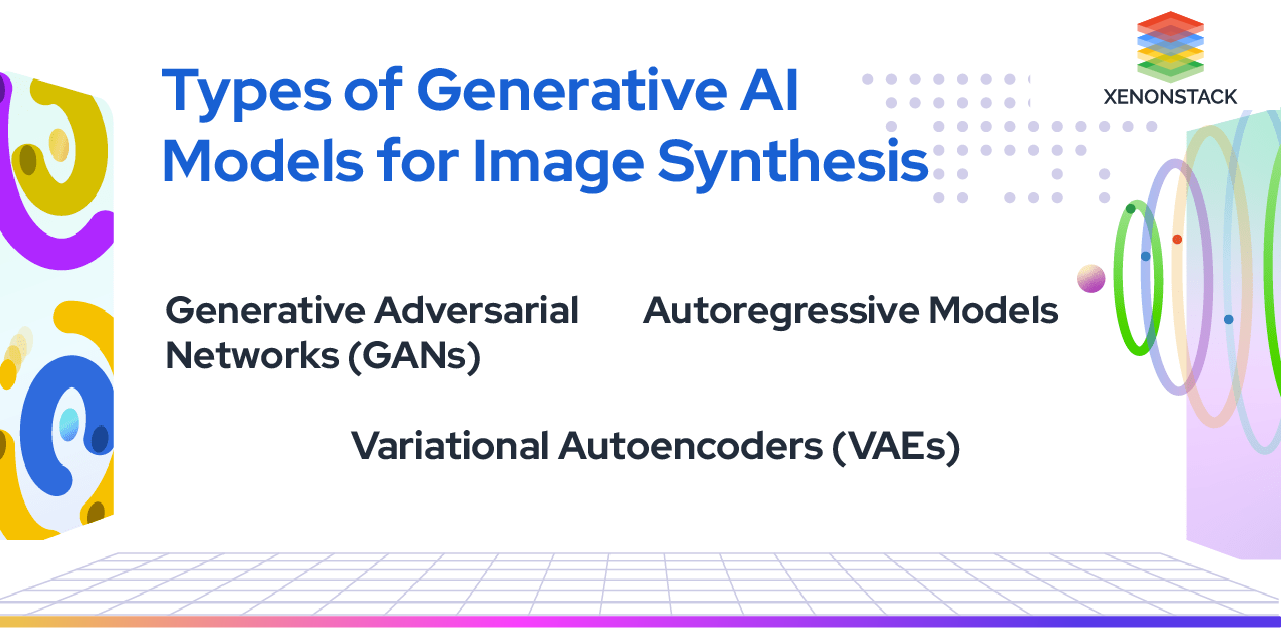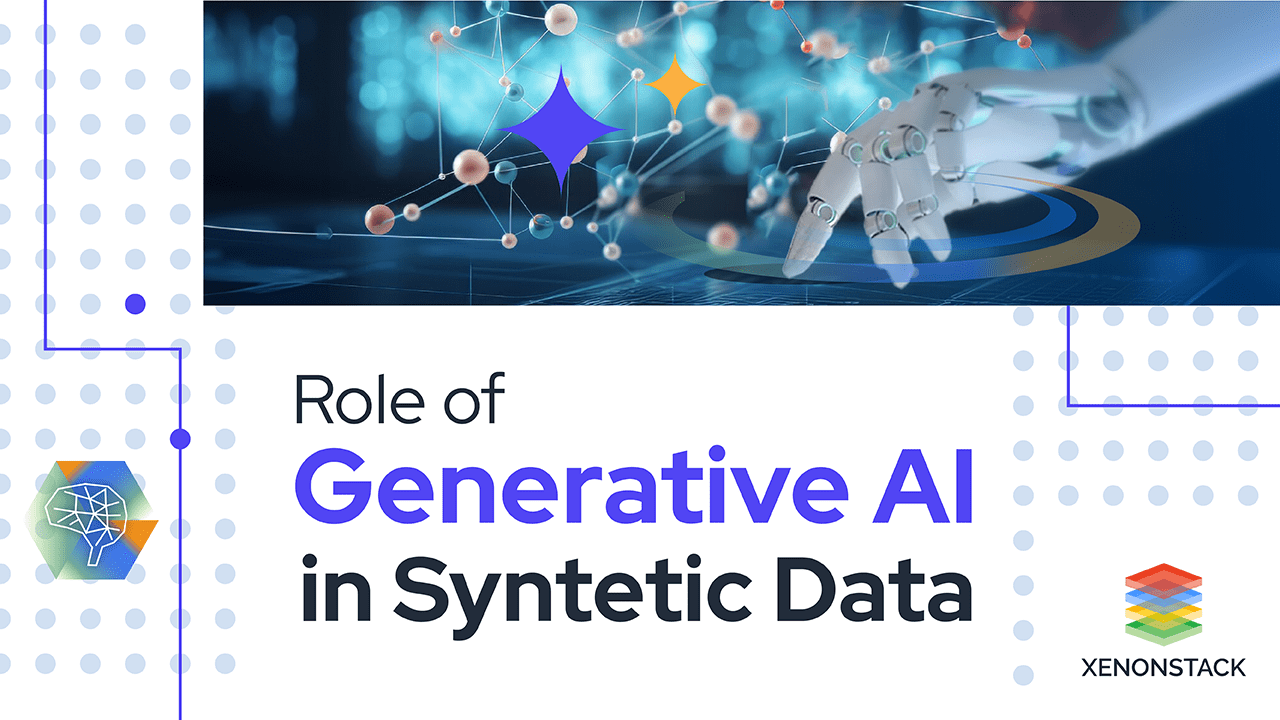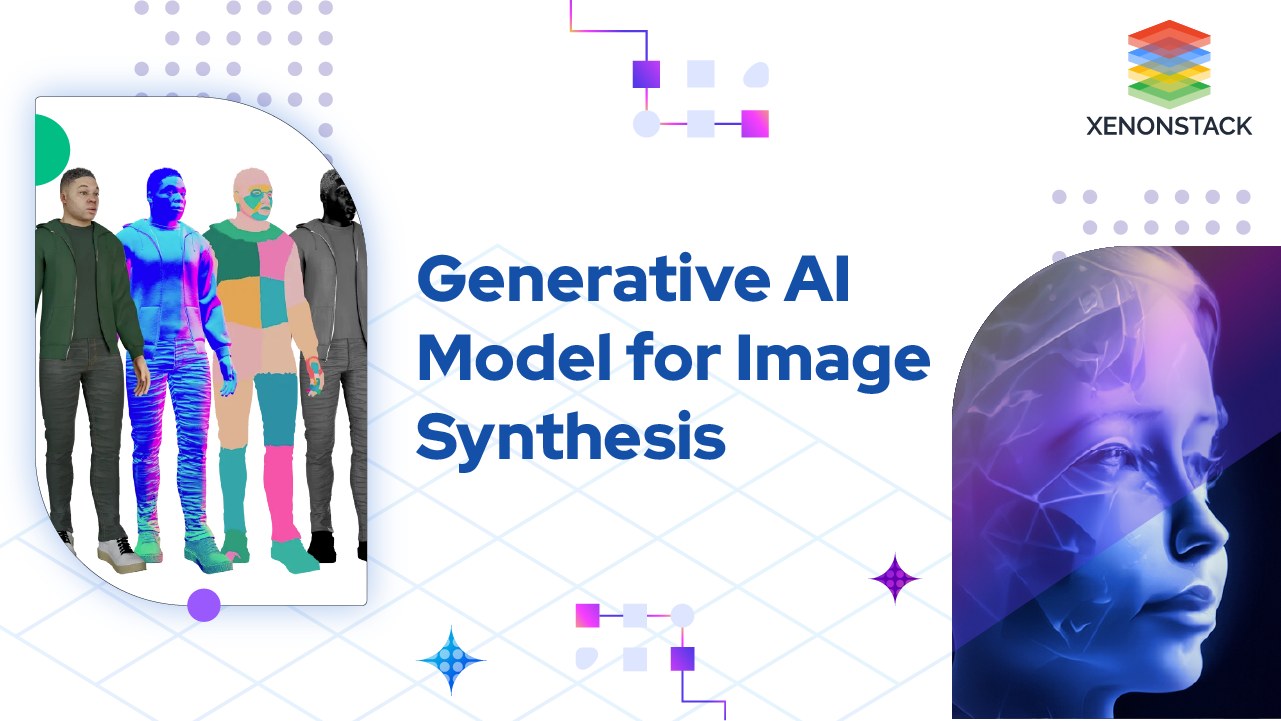
Building a Generative AI model for Image Synthesis
Building a Generative AI model for image synthesis involves several key steps. Here's a detailed breakdown:1. Data Collection and Preparation
-
Data Collection: Gather a diverse and extensive dataset of images relevant to the desired output. Ensure the dataset covers various angles, backgrounds, lighting conditions, and variations.
-
Data Preparation: Preprocess the dataset by standardizing the images' size, resolution, and format. Apply data augmentation techniques to increase diversity artificially, enhancing the model's generalization capabilities.
2. Define the Architecture
-
Choose an appropriate generative model architecture based on the desired outcome and data complexity. Popular choices include Generative Adversarial Networks (GANs) and Variational Autoencoders (VAEs).
3. Implement the Model
-
Set up the necessary infrastructure for deploying the trained model in a real-world context.
-
Integrate the model with existing systems, ensuring seamless input and output handling.
-
Implement real-time generation and monitoring for optimal performance.
-
Ensure scalability to accommodate increasing demands.
-
Incorporate user training, support, and security measures for a positive user experience.
-
Collect ongoing feedback to refine the model's output.
-
Design for future adaptability to remain relevant in evolving AI landscapes.
4. Training of Generative AI Model
-
Feed the preprocessed dataset to the model.
-
Iteratively update the model's parameters to minimize the difference between generated and actual images.
-
Optimize the model to make generated images indistinguishable from real ones.
-
Training time varies based on model complexity and dataset size.
5. Evaluation and Fine-tuning
-
Assess the model's performance using metrics like Inception Score and Fréchet Inception Distance.
-
Apply fine-tuning techniques if the model falls short of expectations.
-
Fine-tuning may involve adjusting hyperparameters, changing architectures, or augmenting the dataset to enhance performance.
6. Generation and Synthesis
-
Once trained and evaluated, generate new images using the Generative AI model.
-
Provide random input to the model's generator to obtain images not part of the original dataset.
-
Generated images showcase patterns and features in the training data, demonstrating the model's ability to synthesize novel content.
Applications of Gen AI in Image Synthesis
Generative AI models, specifically Generative Adversarial Networks (GANs), possess vast applications in image synthesis, revolutionizing diverse industries and creative domains. Here are some critical applications:
-
Art and Design: Generative AI models like GANs enable artists and designers to explore new realms of creativity. They can generate novel patterns, textures, and color schemes, providing inspiration and assisting in creating unique paintings, sculptures, and furniture designs.
-
Gaming: GANs contribute to the gaming industry by creating realistic assets such as characters, environments, and objects. This enhances the visual quality of games, making them more immersive and appealing to players. Game developers can use these models to generate diverse and high-quality content.
-
Fashion: In fashion, using generative AI models for image synthesis opens up new avenues for personalized design. Designers harness the power of these models to craft unique clothing, accessories, and shoe designs, fostering innovation and catering to individual consumer fashion preferences.
-
Animation and Film: GANs are crucial in creating animation, visual effects, and scenes for movies and cartoons. By automating the generation of visual content, these models streamline the production process, making it faster and more cost-effective to produce high-quality animated and cinematic experiences.
-
Medical Imaging: GANs synthesize images for various purposes in the medical field, including X-rays, MRIs, and CT scans. This has significant implications for medical research, treatment planning, and diagnosis, as it allows for generating realistic medical images that can aid healthcare professionals in understanding and addressing complex medical conditions.
-
Photography Enhancement: Generative AI models enhance the quality of photographs, especially those taken with low-resolution cameras or mobile devices. By generating high-quality images from lower-resolution ones, these models improve the overall visual appeal and clarity of photographs.
Conclusion of Generative AI Model for Image Synthesis
In summary, developing a generative AI model for picture synthesis requires a solid understanding of machine learning concepts, encompassing deep neural networks, loss functions, and optimization strategies. Despite the complexity, the benefits are significant, with wide-ranging applications in industries like art, fashion, and entertainment.
The article covers vital phases, from data collection and preprocessing to training and testing the model. Additionally, it discusses the advantages and disadvantages of various generative models, including GANs and VAEs. It also highlights Critical considerations, such as selecting the exemplary architecture and hyperparameters, emphasizing data quality and quantity, and maintaining ongoing model performance monitoring. This comprehensive coverage provides insights into the intricate process of building generative AI models for picture synthesis.





